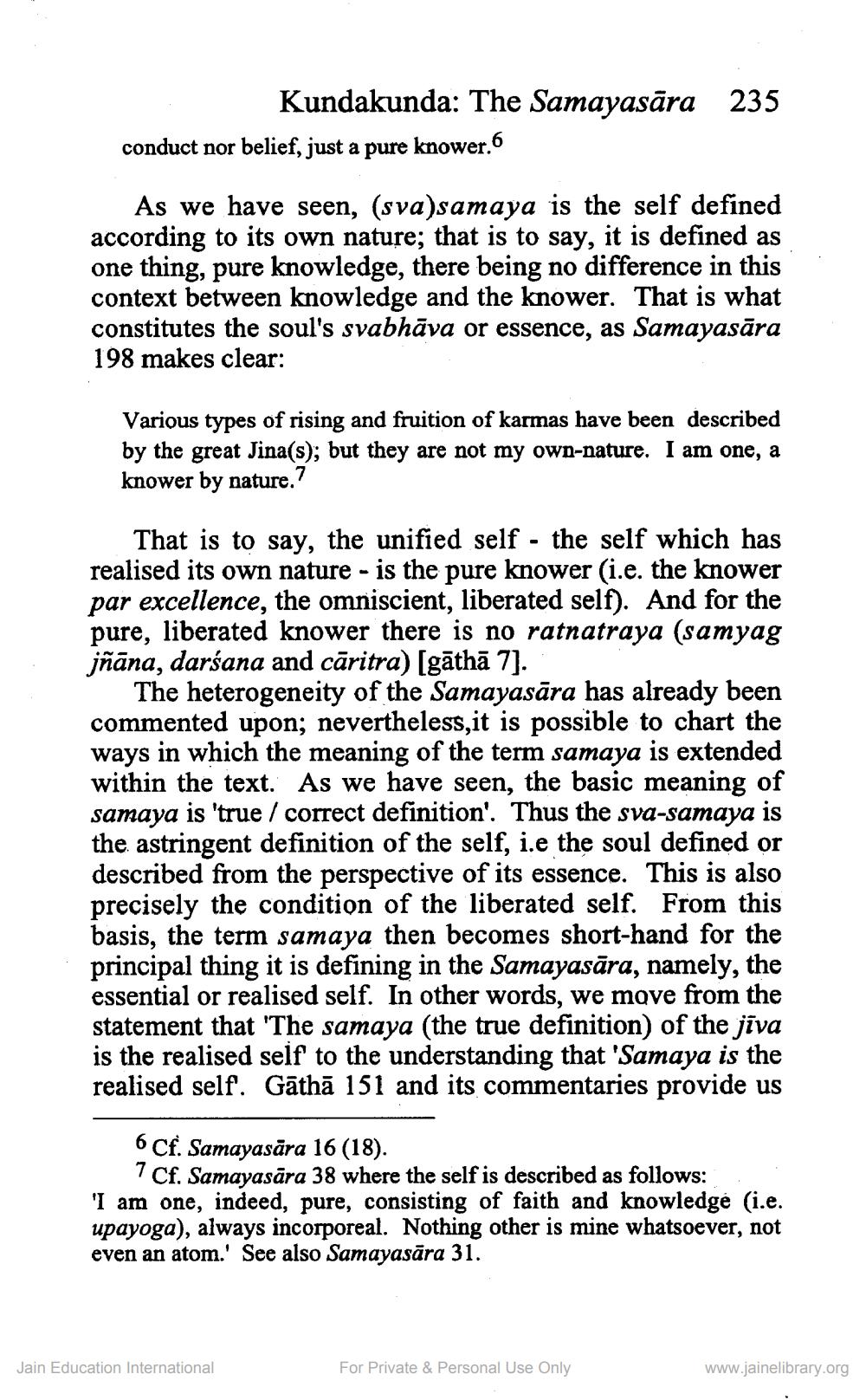________________
Kundakunda: The Samayasāra 235 conduct nor belief, just a pure knower.
As we have seen, (sva)samaya is the self defined according to its own nature; that is to say, it is defined as one thing, pure knowledge, there being no difference in this context between knowledge and the knower. That is what constitutes the soul's svabhāva or essence, as Samayasāra 198 makes clear:
Various types of rising and fruition of karmas have been described by the great Jina(s); but they are not my own-nature. I am one, a knower by nature.?
That is to say, the unified self - the self which has realised its own nature - is the pure knower (i.e. the knower par excellence, the omniscient, liberated self). And for the pure, liberated knower there is no ratnatraya (samyag jñāna, darśana and cāritra) [gāthā 7].
The heterogeneity of the Samayasāra has already been commented upon; nevertheless, it is possible to chart the ways in which the meaning of the term samaya is extended within the text. As we have seen, the basic meaning of samaya is 'true / correct definition'. Thus the sva-samaya is the astringent definition of the self, i.e the soul defined or described from the perspective of its essence. This is also precisely the condition of the liberated self. From this basis, the term samaya then becomes short-hand for the principal thing it is defining in the Samayasāra, namely, the essential or realised self. In other words, we move from the statement that 'The samaya (the true definition) of the jiva is the realised self to the understanding that 'Samaya is the realised self. Gāthā 151 and its commentaries provide us
6 Cf. Samayasāra 16 (18).
7 Cf. Samayasāra 38 where the self is described as follows: 'I am one, indeed, pure, consisting of faith and knowledge (i.e. upayoga), always incorporeal. Nothing other is mine whatsoever, not even an atom.' See also Samayasāra 31.
Jain Education International
For Private & Personal Use Only
www.jainelibrary.org




